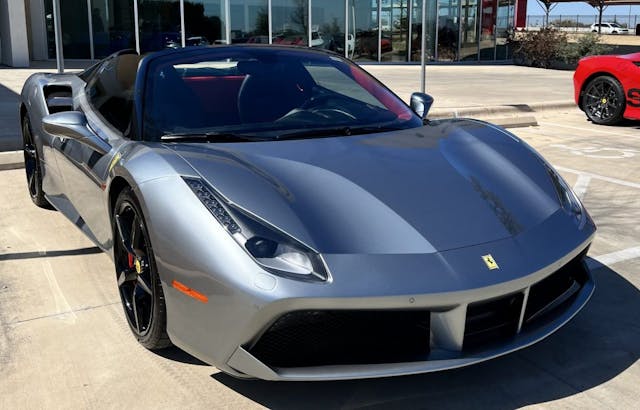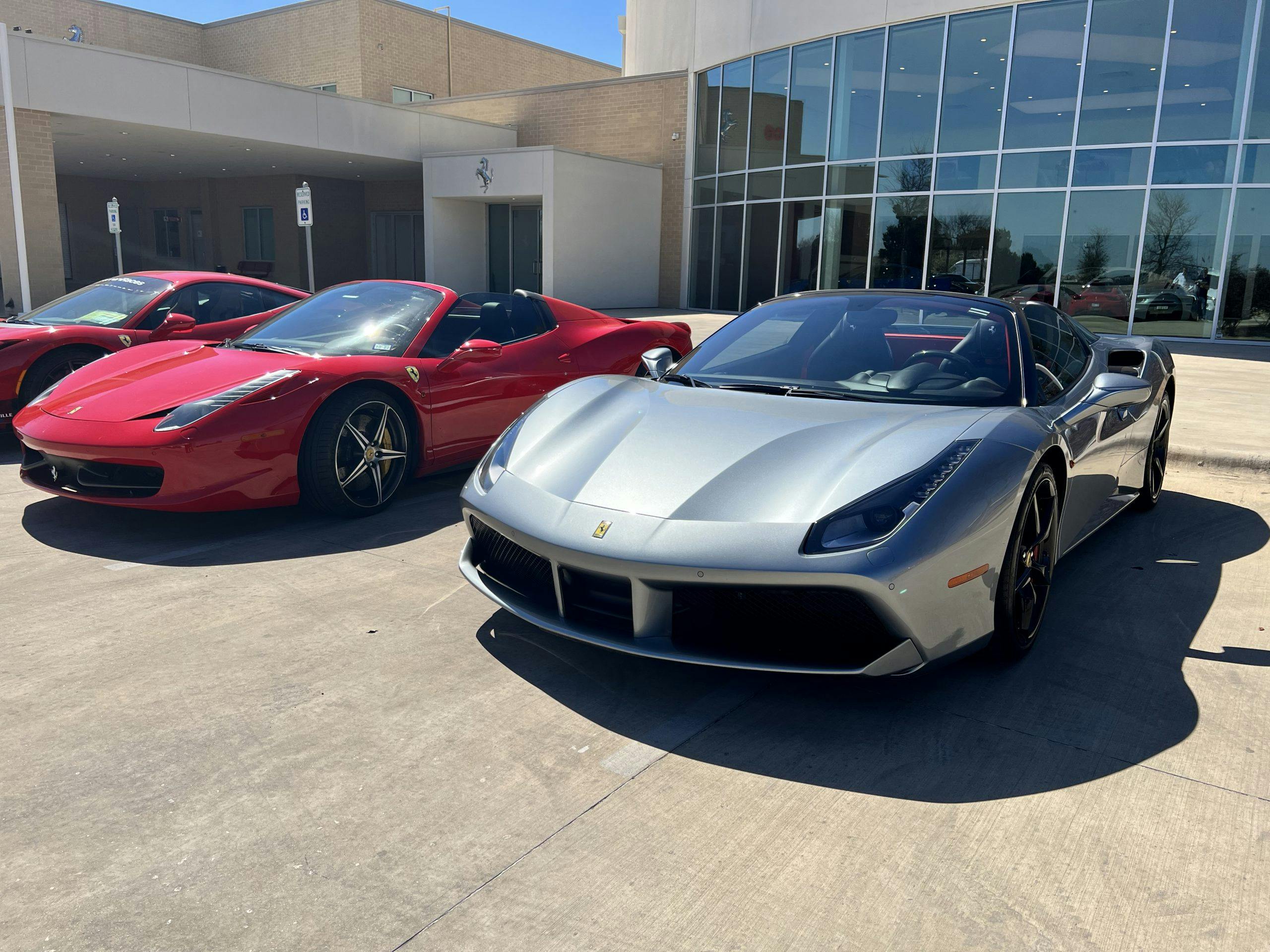Media | Articles
458 v. 488: Is this Ferrari progress?
Nostalgia ain’t what it used to be. Or is it? As long as I can remember, automotive enthusiasts have gotten all teary-eyed about discontinued models. The new car lacks soul, character and driver involvement! BMW and Porsche fanboys are particularly prone to singing “Look what they’ve done to my car, Ma!” In the main, it’s nonsense. Cars improve as they evolve. But not always. Sometimes the pursuit of perfection creates cars that are a serious step backwards.
In 1971, Buick introduced MaxTrac – a traction control system that eliminated wheel slip by cutting engine power. It was such an awkward, invasive and dubious invention it took Mercedes-Benz, BMW and Toyota sixteen years to make the same mistake. Spirited drivers learned to scream “Scotty! I need more power!” Today’s torque-vectoring systems right that wrong. But it took Mitsubishi 19 more years to make it work, transforming Porsche’s “ass-engined Nazi slot car” from dentist killer to soccer-mom thriller.
The first turbos were just as bad in the opposite direction. They delivered a lot of power very quickly, often at the most inconvenient moments. Consumer crusader Ralph Nader vilified the rear-engined Corvair for its tendency to kill its owners, but failed to mention the second-ever turbocharged passenger-car motor’s role in the process. Porsche’s first gen Turbo did no one any favors – save body shops and mortuaries.
Back in the day, stomping on ABS brakes brought new meaning to the word “judder” (this was before the Jägerbomb). Ferrari’s first paddle shift system was so God-awful, Texas-based firm Gated 6 makes a living converting them to stick shift. The only thing worse than driving the first Toyota Prius – a car with less steering and brake feel than Fred Flintstone’s whip – was listening to its owners kvetch about global warming. Don’t get me started about the first stop/start fuel-saving systems. So to speak.

In short, the first cars that “evolve” to include new safety and gas saving features suck the fun out of everything. Until they don’t.
Marketplace
Buy and sell classics with confidence
Today’s driver aids – from electronic brake force distribution to twin scroll turbochargers to heads-up displays – are unobtrusive, dial-down-able and switch-off-able. You can cruise in comfort while Nanny sleeps, or switch to Sport for a stiffer suspension, more direct steering and less HAL 9000-like intervention (I’m sorry Dave, I’m afraid you can’t drive like that.) You can also turn everything off and dice with death. Yes there is that . . .
As my friend Jon Wayne Taylor likes to say, “There is no adventure without the reasonable expectation of death.” Would skiing, surfing or Seeking Arrangement be worthwhile pursuits without a life threatening downside? No. Good thing today’s enthusiasts are free to fun themselves to death. Meanwhile, another sea change has triggered a new wave of petrolhead nostalgia: electrification.
Welcome to a world where the STI badge will no longer adorn a gas-powered Subaru. Where the Chinese overlords of “Lotus UK” have authorized one more petrol-powered car before singing the British body electric. Where Rolls-Royce – of all people – is coming out with a battery powered Spectre coupe. If you think pro-combustion nostalgia is bad now, just wait. “I remember when cars ran on (but not over) dead dinosaurs! When suck, bang, blow described how an engine worked, not a PornHub Venn diagram!”
Are the new electric vehicles “better” than their gas-powered equivalents? For the environment, no. For fun, initially, also no. Tesla? I know sports sedans and you, sir, are not one. Chevy Bolt? Kia Niro? Puh-lease. Ah, but what of the Porsche Taycan Turbo S (Turbo?) and Audi RS e-Tron GT? They can’t be that horrible in the corners, can they? And let’s face it: electric cars are stupid fast from any speed to any speed. Aside from price and convenience, what’s not to love?
I started this article to share my thoughts about trading my naturally aspirated Ferrari 458 Spider for a twin-turbo Ferrari 488 Spider. To skewer the idea that an older car is a better car. Long story long, the 488 is a far more refined vehicle than its predecessor on almost every level: suspension, throttle response, steering, brakes, stereo, leather quality, maybe even looks. As you’d expect. But something important was lost in translation: sound.

Under 3200 rpm, the Ferrari 488 is daily driver quiet. As the motor crests 4000 rpm, the Italian stallion makes a roar that’s less Formula One, more FOAD. The 458’s silken sonic signature is so seductive I’m standing pat. I’m joining the legion of “get off my lawn” automotive enthusiasts who cling to their guns and bibles. Sorry, gas powered internal combustion engines. We’re a dying breed for sure, but again, if something doesn’t contain an element of death, it’s not fun. Right?





